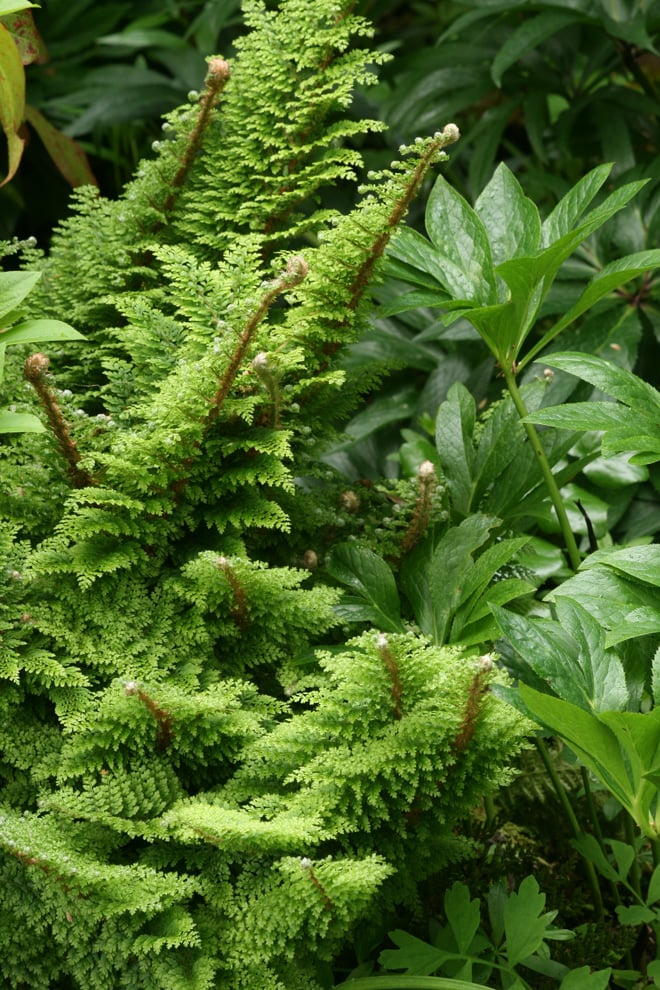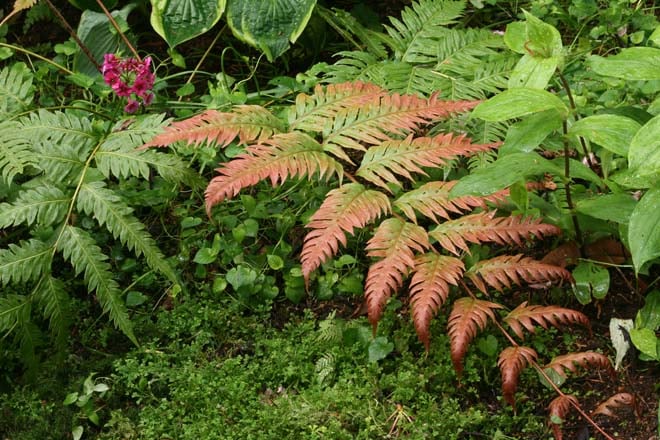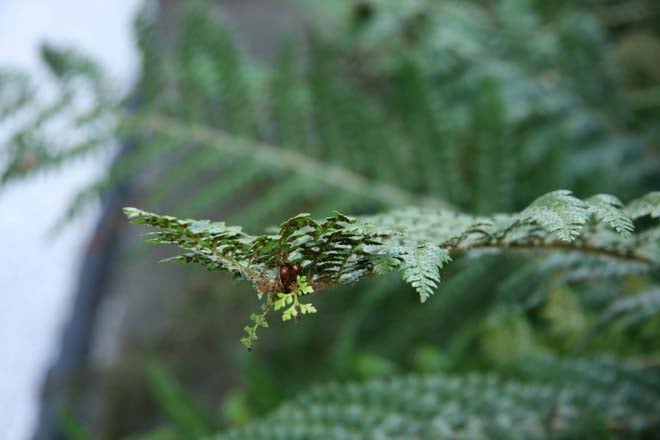

Contributor
- Topics: Archive

Victorians suffered from all manner of ailments from canine madness to hip gout, but the most pleasurable and desirable of these afflictions was and still is Pteridomania or fern fever. The Victorian obsession for ferns was nearly limitless. Fern forays into the wild resulted in the digging of anything with a little variation from the norm. Their hunger ultimately decimated many wild populations, but also led to thousands of selections, some of which are still available today. The popularity of ferns in the late 1800s came to a crashing halt with the hardships of World War I, but a handful of collections survived in the hands of a dedicated few. Choice plants were passed from collector to collector and now, nearly a century later, are regaining their well-deserved popularity.
These Victorian relics are surprisingly common today. An excellent example is Polystichum setiferum, the soft shield fern. In gardens today, the common species is more often found as of one of its old surviving cultivars rather than as the typical wild form. These lingering selections are a tangible and beautiful example of its resiliency and desirability. Polystichum setiferum Divisilobum Group and Plumosomultilobum Group, originally selected over 100 years ago, have proven so popular and durable they were given the Great Plant Picks designation in 2005 as superior plants for Northwest gardens. Another holdover from the 1800s is Adiantum ×mairisii. This choice maidenhair fern was discovered as a chance hybrid before 1885 in the Mairis & Co. nursery. Unable to produce fertile spores, it has been divided and passed down through generations until it was recently propagated in a laboratory by micro-propagation, making it widely available to the gardening public. The lacey fronds form a tight vigorous clump, and the plant has a small, compact habit in the garden. Mature plants reach about 12 to 15 inches tall and 18 to 24 inches across. It is especially useful in its ability to tolerate more sun than most maidenhair ferns.

The growing popularity of ferns and renewed appreciation for good foliage has sparked many new selections and cultivars. Fresh and novel selections appear every year, beckoning gardeners with varying fronds and colorful leaves. A recent find is the choice cut-leaf form of a West Coast hybrid polypody fern, Polypodium calirhiza, a naturally occurring hybrid between licorice fern, Polypodium glycyrrhiza, and the California polypody, Polypodium californicum. This striking new selection is called ‘Sarah Lyman’ and sports wintergreen (October through June) fronds that are deeply cut and lacerated along the edges. Fine examples of this can be found at UC Berkeley Botanical Garden. Hybrids have also recently come to light between lady fern, Athyrium filix-femina, and Japanese painted fern, Anisocampium niponicum var. pictum (syn. Athyrium niponicum var. pictum). Most of these combine a degree of toughness and upright growth of the lady fern with the brightly colored foliage of the painted fern. Athyrium ‘Ghost’ and ‘Branford Beauty’ have become garden staples, but new cultivars are on the rise. Over the last two years Athyrium ‘Ocean’s Fury’ made the scene with pale, weathered gray-green leaves delicately crested at the tips. Robustly growing fronds reach about 2 feet long with a widely arching vase shape. If size matters, this year will see a newly released giant called Athyrium ‘Godzilla’. The pale whitish green fronds are rumored to reach, in maturity, at least 3 feet tall. It is virtually untested in the Northwest, but I would suspect care should be taken to not fertilize this cultivar with any radioactive materials. These painted lady fern hybrids perform best with bright open shade or partial sun, avoiding hot locations and afternoon sun. Too much shade will cause the stems to become weak and brittle in mid to late summer.

Photo: Richie Steffen
Along with a rise in new cultivars, a steady stream of previously unavailable species is making its way to West Coast gardens. One of the most stunning is a huge and colorful Woodwardia unigemmata, the single jewel chain fern. Mature specimens can produce bold fronds arching over 5 feet long. The most widely available form sports blood red new growth that slowly fades to a shiny dark green. Many of the recent and uncommon Chinese collections have softer greenish-red blushed new growth. Either of these forms makes a bold statement in the garden with low, widely arching mounded growth. A second must-have species is Polystichum ×dycei. This hybrid was created in the 1960s by Dr. Ann Sleep of Leeds University in England, using one parent fern that produces bulblets on the leaf tips, Polystichum proliferum, and one parent that is extremely tough and hardy, Polystichum braunii. The result is a superior garden plant with vigorous growth and shiny, dark green, finely divided foliage. This exceptional fern remained in near obscurity until its widespread availability a few years ago. Its lush growth and hybrid vigor make it a great plant for beginners, but its unusual history is compelling for the collector. Patience and diligently searching for choice specialty nurseries and regional plant sales can yield several rare, but excellent, ferns species that could thrive and challenge the home gardener.

The delight we share today is not so different from the joy Victorians shared in the grips of Pteridomania. Endless variation and fascinating foliage guarantee ferns a permanent spot in the garden, provide us with a horticultural link through history, and connect us to the roots of popular gardening.
Share:
Social Media
Garden Futurist Podcast
Most Popular
Videos
Topics
Related Posts

Low Maintenance Gardens – Better for Pollinators and People
Autumn 2022 “I come out every day. It’s therapy, my meditation.” Janet’s young garden transformed from overgrown, invasive plants to mostly natives. The dailiness of

Calochortophilia: A Californian’s Love Affair with a Genus
Summer 2022 I can chart the progression of my life by Calochortus. For the last two decades, at least. As a teenage girl growing up

Pacific Plant People: Carol Bornstein
Spring 2022 Public gardens play a key role in demonstrating naturalistic planting design, selecting native and adapted plants for habitat, and testing techniques for reducing

Add Year-Round Interest and Winter Blooms for Pollinators
Spring 2022 This article was created from an Interview by Merrill Jensen with Neil Bell in the Summer of 2021 for our Pacific Plant People










Responses